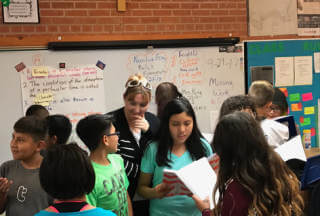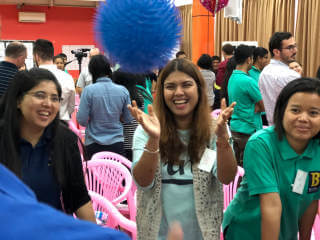
"It's the students' job to learn the language; it's the teacher's job to learn the students." Caleb Gattegno
The sixth component of SIOP, Practice & Application, asks the teacher to consider how the students will be practicing and applying the language and content of the lesson. Reflecting on the features of this component allows us to think about what content and language our students will be practicing and how they will go about it.
This component acts as a poignant reminder of what students should be doing during every step of the lesson (practicing and apply the content and language) and how they should be doing it. The first feature of this SIOP Component encourages teachers to involve students' hands with manipulatives and hands-on activities. The second feature tells teachers to give students meaningful ways to apply their knowledge and skills of the lesson's content and language. The final feature hints at the power behind integrating the four skills (speaking, listening, reading, writing) in one lesson. This component suggest we give students hands on opportunities that integrate the four skills and allow students to practice the lesson's culture and language.

SIOP reminds us again and again that it is essential to pay just as much attention to the language as it is to pay attention to the content. SIOP invites the educator to consider how students will practice both. This is important when considering the challenge of getting students to own (versus rent) the language and the content of the lesson. Seeking means to use all four domains of language - speaking, listening, reading, writing - as a way of practicing the content and the specific language associated with it.
Integrating the four domains of language can have a lot of benefits. First, it allows students to use strengths to develop new ones. Next, it gives everyone a chance to shine at something. Finally, recycling the content and language by using different skills leads to ownership. Here are three ways you can integrate the four skills (or four domains of language).
For more information on the four skills and how to integrate them, see SIOP feature 22.
This sixth component of SIOP asks the teachers to maximize the opportunities the students have to interact with the content and the language in a variety of ways. Through hands-on experiences, four-skills integrated lessons, and plenty of practice activities, students take ownership of the content and the language. As Caleb Gattegno's quote reminds us, teachers can learn for their students. They can, however, give them the right kind of activities so the students can successfully complete their own learning processes.
There are plenty of reasons to invite TESOL Trainers to provide professional development on SIOP to your teaching staff. We provide on-site and virtual training sessions.
The biggest reason is that your teachers will thank you for choosing such an interactive approach and your students will thank you for making your teachers more engaging.
We create an engaging, empowering experience that gives teachers everything they need to implement the strategies immediately in their own teaching contexts.
TESOL Trainers supports all types of educational institutions; we specialize in supporting excellence in teaching and learning by providing experiential professional development in the form of training, transformative peer coaching, and specialized course creation.
TESOL Trainers can help teachers become more efficient and effective at helping all students, including English learners. We assist teachers in refining their metacognitive skills, honing their reflective teaching practices, and developing new teaching skills that set all students up for success.
TESOL Trainers will transform how teaching and learning occur.
Click the button below to claim your free ebook and join our mailing list.